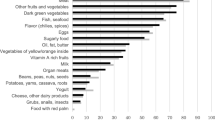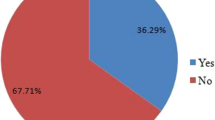Abstract
Objective
To assess the benefits of nutrition supplementation in children living with HIV (CLHIV).
Methods
A prospective observational study was carried out at antiretroviral therapy (ART)/pediatric centre of excellence (PCOE), Niloufer hospital for a period of one year in CLHIV (N = 164) aged 1 to 18 y referred to ART/PCOE. Nutrition supplementation was given in the form of Ready to Use Food (About 350 kcal and 12 g of protein per day) supplementation to assess improvement in Height for age Z (HAZ), Weight for Age Z (WAZ), Weight for Height Z (WHZ) and Body Mass Index for age Z (BMIZ) scores over a period of one year.
Results
At baseline, 65.5 % and 57.5 % of children below and above 5 y respectively were stunted. 24.1 % and 45.3 % children below and above 5 y respectively were wasted/thin (as assessed by BMI for age). Mean BMIZ score significantly improved in both the age groups (0.96 Z score, P < 0.001) in below and above 5 (0.37 Z score, P < 0.001) respectively at the end of 12 mo. Mean HAZ score also significantly improved in children above 5 y (0.09 Z score, P < 0.05) with non-significant improvement below 5 y (0.14 Z score, P < 0.57) by the end of 12 mo.
Conclusions
Nutrition supplementation over one year resulted in moderate improvement in the nutritional status of CLHIV. However, it is unclear, whether the improvement in nutritional status was due to regular visits to ART centre that may have resulted in better adherence to treatment or an additional benefit of nutrition intervention. This warrants a well-designed randomized controlled trial to examine the benefits of nutrition supplementation in CLHIV attending ART centre.

Similar content being viewed by others
Abbreviations
- AOR:
-
Adjusted Odd Ratio
- AP Foods:
-
Andhra Pradesh Foods
- ART:
-
Antiretroviral Therapy
- ARV:
-
Antiretroviral
- BMI:
-
Body Mass Index
- BMIZ:
-
Body Mass Index for Age Z Score
- CD4:
-
Cluster of Differentiation-4
- CED:
-
Chronic Energy Deficiency
- CLHA:
-
Children Living with HIV/AIDS
- CLHIV:
-
Children Living with Human Immunodeficiency Virus
- HAZ:
-
Height for Age Z Score
- HIV:
-
Human Immunodeficiency Virus
- NACO:
-
National Aids Control Organization
- PCOE:
-
Pediatric Centre of Excellence
- Pre-ART:
-
Pre Antiretroviral Therapy
- RCT:
-
Randomized Controlled Trial
- RPC:
-
Regional Pediatric Centre
- RUTF:
-
Ready to Use Therapeutic Food
- WAZ:
-
Weight for Age Z Score
- WCD:
-
Women & Child Development
- WHO:
-
World Health Organization
- WHZ:
-
Weight for Height
References
WHO. Key facts on HIV epidemic and progress in regions and countries in 2010. In: WHO. Available at: http://wwwwhoint/hiv/pub/progress_report2011/regional_facts/en/index1html. Accessed on 27 Apr 2014.
National Family Health Survey (NFHS-3). Mumbai: International Institute for Population Sciences; 2007.
Babameto G, Kotler DP. Malnutrition in HIV infection. Gastroenterol Clin North Am. 1997;26:393–415.
Macallan DC, Noble C, Baldwin C, et al. Energy expenditure and wasting in human immunodeficiency virus infection. N Engl J Med. 1995;333:83–8.
Rose AM, Hall CS, Martinez-Alier N. Aetiology and management of malnutrition in HIV-positive children. Arch Dis Child. 2014;30:33–48.
Stringer JSA, Zulu I, Levy J, et al. Rapid scale-up of antiretroviral therapy at primary care sites in Zambia: feasibility and early outcomes. JAMA. 2006;296:782–93.
Zachariah R, Fitzgerald M, Massaquoi M, et al. Risk factors for high early mortality in patients on antiretroviral treatment in a rural district of Malawi. AIDS. 2006;20:2355–60.
World Health Organization. Nutrition requirements for people living with HIV/AIDS: Report of a technical consultation. Geneva: WHO; 2003.
WHO. Description. Available at: http://www.who.int/nutgrowthdb/about/introduction/en/index5.html. Accessed on 21 Apr 2015.
Mda S, van Raaij JMA, MacIntyre UE, de Villiers FPR, Kok FJ. Duration of hospitalization and appetite of HIV-infected South African children. Matern Child Nutr. 2011;7:175–87.
Kosmiski L Energy expenditure in HIV infection. Am J Clin Nutr. 2011;94:1677S–82.
Villamor E, Mbise R, Spiegelman D, et al. Vitamin A supplements ameliorate the adverse effect of HIV-1, malaria, and diarrheal infections on child growth. Pediatrics. 2002;109:E6.
Coutsoudis A, Bobat RA, Coovadia HM, Kuhn L, Tsai WY, Stein ZA. The effects of vitamin A supplementation on the morbidity of children born to HIV-infected women. Am J Public Health. 1995;85:1076–81.
Srinivasan MG, Ndeezi G, Mboijana CK, et al. Zinc adjunct therapy reduces case fatality in severe childhood pneumonia: a randomized double blind placebo-controlled trial. BMC Med. 2012;10:14.
Irlam JH, Siegfried N, Visser ME, Rollins NC. Micronutrient supplementation for children with HIV infection. Cochrane Database Syst Rev. 2013;10:CD010666.
Sunguya BF, Poudel KC, Mlunde LB, et al. Ready to Use Therapeutic Foods (RUTF) improves undernutrition among ART-treated, HIV-positive children in Dar es Salaam. Tanzania Nutr J. 2012;11:60.
Bhutta ZA, Ahmed T, Black RE, et al. What works? Interventions for maternal and child undernutrition and survival. Lancet. 2008;371:417–40.
Acknowledgments
The authors thank women & child development (WCD) and Andhra Pradesh (AP) Foods for providing nutritional supplements throughout the study period. They thank Superintendent, Niloufer hospital for the support and encouragement for the study. They thank Dr. Sujatha, Ex Medical officer for provided medical services. They thank all the staff members of antiretroviral therapy (ART)/pediatric centre of excellence (PCOE) for the smooth functioning of the project. Lastly, they would like to sincerely thank the patients attending the PCOE for their continued trust in the treatment and care provided at the centre.
Contributions
HST and GSG: Involved in study design; RSM, BK and SPK: Analyzed and interpreted data; HST and SPK: Wrote the first draft; RSM and BK: Helped in editing the paper. All the authors approved the final manuscript. HST will act as guarantor for this paper.
Conflict of Interest
None.
Source of Funding
None.
Author information
Authors and Affiliations
Corresponding author
Rights and permissions
About this article
Cite this article
Thakur, H.S., Gottapu, G.S., Kadali, S.P. et al. Effect of Nutrition Supplementation in Children Living with HIV at ART Centre. Indian J Pediatr 83, 232–237 (2016). https://doi.org/10.1007/s12098-015-1873-5
Received:
Accepted:
Published:
Issue Date:
DOI: https://doi.org/10.1007/s12098-015-1873-5




